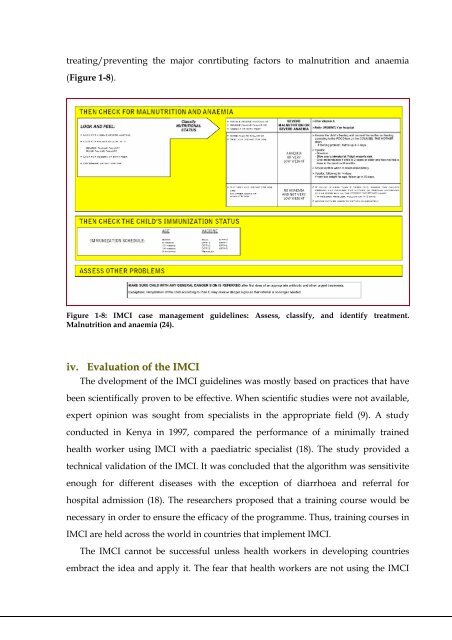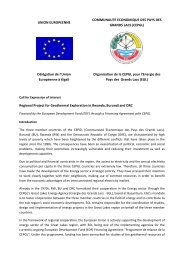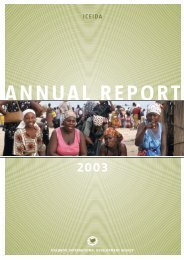The Implementation of Integrated Management of Childhood Illness ...
The Implementation of Integrated Management of Childhood Illness ...
The Implementation of Integrated Management of Childhood Illness ...
Create successful ePaper yourself
Turn your PDF publications into a flip-book with our unique Google optimized e-Paper software.
treating/preventing the major conrtibuting factors to malnutrition and anaemia<br />
(Figure 1-8).<br />
Figure 1-8: IMCI case management guidelines: Assess, classify, and identify treatment.<br />
Malnutrition and anaemia (24).<br />
iv. Evaluation <strong>of</strong> the IMCII<br />
<strong>The</strong> dvelopment <strong>of</strong> the IMCI guidelines was mostly based on practices that have<br />
been scientifically proven to be effective. When scientific studies were not available,<br />
expert opinion was sought from specialists in the appropriate field (9). A study<br />
conducted in Kenya in 1997, compared the performance <strong>of</strong> a minimally trained<br />
health worker using IMCI with a paediatric specialist (18). <strong>The</strong> study provided a<br />
technical validation <strong>of</strong> the IMCI. It was concluded that the algorithm was sensitivite<br />
enough for different diseases with the exception <strong>of</strong> diarrhoea and referral for<br />
hospital admission (18). <strong>The</strong> researchers proposed that a training course would be<br />
necessary in order to ensure the efficacy <strong>of</strong> the programme. Thus, training courses in<br />
IMCI are held across the world in countries that implement IMCI.<br />
<strong>The</strong> IMCI cannot be successful unless health workers in developing countries<br />
embract the idea and apply it. <strong>The</strong> fear that health workers are not using the IMCI<br />
18
















